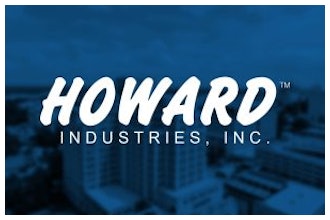Globalization and the uncertainties of an ever-changing economic landscape have introduced new complexity to the specialty chemicals business. On a daily basis, specialty chemicals producers must navigate multiple variables to determine the most profitable products to produce, when and where to produce them and how to successfully execute against that plan.
This article looks at some of the challenges in supply chain management and identifies technology solutions that align people and processes for success. It also suggests ways for specialty chemicals producers to unlock opportunity and deliver an operational edge.
Supply Chain Excellence Through Software
Specialty chemicals companies who implement supply chain excellence programs report as much as a 10 percent increase in margins. This tangible impact on the bottom line demonstrates that supply chain excellence is not an esoteric term, but an actionable initiative that specialty chemicals companies cannot afford to ignore.
Supply chain leaders need to evaluate the critical issues that prevent their supply chain operations from adapting to their business needs. Typical issues include operating in business silos, lack of visibility, and lack of decision support tools, which compounded, significantly hinder the ability for the business to respond quickly to customer demand. It is important for business leaders to identify these challenges in their organization and to take action to achieve supply chain excellence to successfully navigate market complexity and unlock opportunity.
The Measures of Supply Chain Success
For supply chain operations, the typical measures of success include:
- Customer service – Customer service is paramount for specialty chemicals producers and it is a standard measure of business performance. There is constant pressure to reduce order lead times to retain customers, as well as pressure to maintain appropriate stock to meet demand.
- Inventory management – Inventory is expensive to store and ties up working capital. Companies require the ability to closely monitor inventory levels and track common metrics such as inventory turns and number of days of demand that the current inventory can cover.
- Costs – Costs related to purchase of raw materials, carrying inventory, distribution and other costs are spread across the supply chain, and therefore make the supply chain a logical place to track cost savings. Each company has its own individual metrics such as best delivered cost or cost of raw material per ton of product produced. At the plant level, asset utilization and product yields contribute to operating costs and must be tracked with their own metrics.
Barriers to Success
Companies that optimize their supply chain position themselves for success by aligning people and processes through technology. Typical barriers to supply chain agility relate to business alignment, shared information and visibility on assets and lack of effective decision support systems:
- Lack of alignment – Siloed processes and work practices not only lead to inefficient workflows and time delays, but most importantly, disrupt operations and result in objectives that run counter to each other. The net result is lack of ability to respond quickly and profitably to unplanned occurrences such as new orders, equipment failure, raw material shortages, labor constraints or other factors. Operational success is dependent on supply chain processes that seamlessly span strategic, tactical and operational levels and operations that connect and align all stakeholder interests.
- Lack of business visibility – For many companies, individual spreadsheets are the primary means for tracking data, performing data analysis and presentation reports and graphs. This practice is outdated and leads to the creation of “islands of automation.” These “tools” require manual data entry, which leaves them prone to manual error. As they do not represent the overall business, these “silos of information” cannot consider any broader planning and scheduling operations. The inability to see the larger operational picture results in decisions based on temporary issues and short term strategy inconsistent with the broader business direction.
- Lack of decision support tools – Companies also lack specialized decision support systems that provide real-time, operation-wide information to enable the best decisions. Without visibility on assets, access to information, or understanding of the operational plan, producers cannot react or adapt to changes in the market environment. In fact, an overwhelming number of chemical producers again rely on manual spreadsheets as transaction support systems.
The result is an environment where Planners and Schedulers do not have the best information to make the more informed operational decision.
Supply Chain Excellence Pays Off
Companies that deploy supply chain optimization software have the potential to realize significant margin improvement of 10 percent by:
- Increasing capacity 3 – 5 percent
- Improving customer service 5 – 10 percent
- Improving first-quality production 5 percent
- Reducing costs 4 – 6 percent
The latest supply chain software enables companies to optimize trade-offs between customer service, inventory levels and manufacturing costs and accelerate process innovation. A supply chain best practice is to integrate supply planning with scheduling at the operating level to ensure that the supply plan translates to a detailed schedule for execution. This functionality requires application of technology in two business areas — Sales & Operations Planning (S&OP) and Scheduling, which companies can deploy sequentially or as an integrated solution in a single plant or across multiple sites.
The Bottom Line of Supply Chain Excellence
Specialty chemicals companies today face numerous uncertainties and constantly navigate internal and external business variables, but sophisticated software systems are available to drive supply chain excellence and to align people and processes. By building S&OP and Scheduling operations grounded in the latest supply chain optimization software, companies can make the best operational decisions, respond to market fluctuations, absorb disruptions and execute against the plan. The tangible benefits are clear — improve margin by up to 10 percent, improve customer service 5 – 10 percent, improve first-quality production 5 percent and reduce costs 4 – 6 percent. Conversely, the cost of lost opportunity may never be known. Through leading-edge supply chain software, specialty chemicals manufacturers can optimize performance, align processes and empower decision makers to maximize profit and gain the competitive advantage.
Laura Rokohl is the Chemicals Industry Marketing Manager at AspenTech, specializing in supply chain solutions for the chemicals, polymers, and specialty chemicals markets.






















